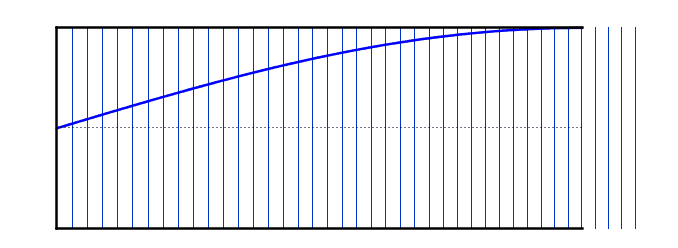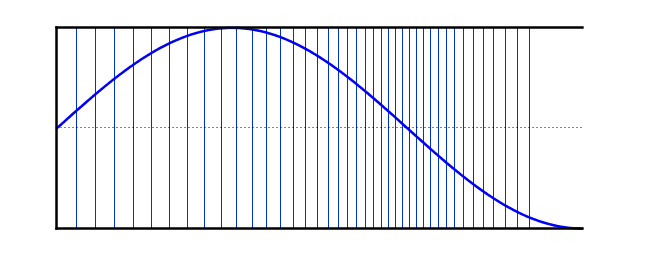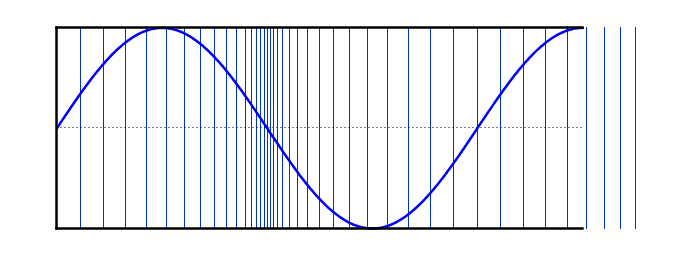|
When a standing wave forms in an air column, there is always an antinode at any open end and a node at any closed end. If the air column is open at one end and closed at the other, the fundamental mode of vibration has an antinode at the open end and a node at the closed end. This is also known as the first harmonic. For the first harmonic, the length of the air column is equal to one quarter of a wavelength of the standing wave, because the distance from one node to the nearest antinode is one quarter of a wavelength. The frequency of the first harmonic is called the fundamental frequency (f0). In the diagrams below, the standing wave is shown in both its longitudinal and transverse forms. The actual sound wave is longitudinal, but the nodes and antinodes are easier to visualize in the form of the equivalent transverse wave. | |
 Fundamental Frequency (First Harmonic) |
f = f0 L = λ/4 λ = 4L |
| At the 3rd harmonic the standing wave consists of one and a half "segments". The wavelength is one third the wavelength of the fundamental and therefore the frequency is three times that of the fundamental. For air columns with one closed end, their is no 2nd harmonic. Because the second mode is at three times the frequency of the fundamental, it is actually the third harmonic. Air columns closed at one end can only form standing waves at the odd harmonics. | |
 3rd Harmonic |
f = 3f0 L = 3λ/4 λ = 4L/3 |
| At the 5th harmonic the standing wave consists of two and one half "segments". The wavelength is one fifth the wavelength of the fundamental and therefore the frequency is five times that of the fundamental. | |
 5th Harmonic |
f = 5f0 L = 5λ/4 λ = 4L/5 |
Here is a single simulation where various standing waves on strings and air columns can be compared: